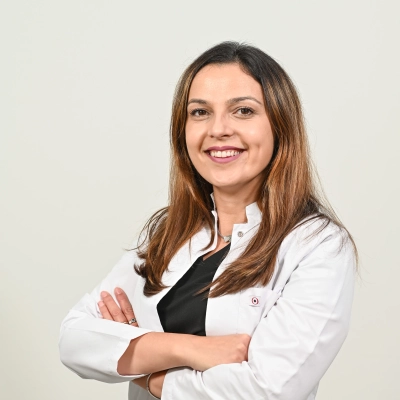5 Non-Pharmacological Interventions that Complement Medication Therapy
Discover a range of non-pharmacological interventions that can significantly enhance the effectiveness of medication therapy. This article explores how simple lifestyle changes and targeted exercises can complement traditional treatment approaches. Drawing on insights from experts in the field, readers will learn about evidence-based strategies to improve their overall health outcomes.
- Structured Sleep Plan Enhances Medication Efficacy
- Prioritizing Sleep Improves Treatment Outcomes
- Physical Activity Fills Void in Addiction Recovery
- Kegel Exercises Complement Urological Treatment Plans
- Targeted Exercise Routines Amplify Medication Benefits
Structured Sleep Plan Enhances Medication Efficacy
Cognitive Behavioral Therapy (CBT-1) with a structured sleep plan is one non-pharmacological intervention that I recommend alongside medication, whether that be for ADHD, chronic pain, anxiety, or depression. This pairs very well with medication as it promotes faster symptom relief and can ease side effects. Stabilizing sleep-wake cycles can alleviate SSRI/SNRI nausea, stimulant rebound, and pain flares. A strong sleeping routine also helps improve adherence and functioning during the day.
A simple plan includes:
1. A fixed, non-negotiable wake time each day with a flexible 30-minute give or take on the weekends
2. Morning light exposure with brief movement outside
3. Cutting caffeine out approximately 8 hours before bed
4. Having a wind-down window 30 minutes before bed
5. Coordinating with a prescriber by taking activating medicines earlier and sedating medicines closer to bedtime as directed
With this method, people report having a more stable mood, less daytime anxiety, better daytime focus, and reduced side effects with medicine use. This approach also allows clinicians to see clearer symptoms and distinguish between the effects of medication and sleeping problems, making dose adjustments more effective.

Prioritizing Sleep Improves Treatment Outcomes
One of the first things I almost always recommend alongside medication is simply more sleep, whether that means increasing total hours in a day or helping someone get longer stretches of uninterrupted sleep. It's amazing how much of a difference this makes. Sleep isn't just rest; it's the foundation for managing anxiety, mood, stress, and focus.
I see it all the time: poor sleep either sets the stage for anxiety and mood symptoms or makes them much worse. With children especially, not getting enough good-quality sleep shows up as bigger behavior struggles, meltdowns, or trouble focusing.
Medication can help balance the brain, but without healthy sleep, it's like trying to build on shaky ground. When families prioritize better sleep habits, consistent routines, fewer screens before bed, and creating a calm environment, the changes are powerful. Children are calmer, moods even out, and parents often feel like they're finally seeing progress stick.
It's not fancy, but prescribing more sleep really does give families a solid foundation to build everything else on.

Physical Activity Fills Void in Addiction Recovery
The medication we use in treatment is incredibly important, but it's only one piece of the puzzle. The real work of recovery is in building a new, healthy life. For a person in active addiction, their brain is trained to seek a dopamine hit from a substance, and when you take that away, there's a huge void. Our job is to help them fill that void with something else.
One of the most powerful non-pharmacological interventions I frequently recommend is a simple one: consistent physical activity. I'm not just talking about fitness. I'm talking about a new way to get a natural dopamine hit. It could be something as simple as jogging in a park or joining a local hiking group. It gives a person a new way to feel good about themselves and their body.
We see this integrated approach benefit our patients all the time. The medication helps to stabilize them, but the physical activity helps them to build a new identity. The person who finds a new hobby or a new passion is more likely to stay in recovery. They're not just managing their pain; they're building a new life.
My advice is simple: the most effective way to help a person heal is to give them a reason to live, not just a way to manage their pain.
Kegel Exercises Complement Urological Treatment Plans
Alongside medications, I often recommend Kegel exercises to strengthen the pelvic floor muscles. They are simple, non-invasive, and can be done discreetly almost anywhere. In men, Kegels improve bladder control after prostate surgery, help with urinary incontinence, and can support erectile function by improving blood flow and muscle tone. In women, they are especially valuable for stress incontinence and post-partum recovery. When combined with medication, I've seen Kegels accelerate recovery and give patients a sense of active participation in their care. For example, men recovering from prostate surgery who consistently practiced pelvic floor training regained continence faster than those relying only on medication. Similarly, in women, Kegels often reduce the need for higher medication doses and significantly improve overall quality of life.
Dr. Martina Ambardjieva, MD, PhD candidate
Urologist, Teaching surgery assistant
Medical Expert for Invigor Medical
https://www.invigormedical.com/

Targeted Exercise Routines Amplify Medication Benefits
I often suggest that exercising and stretching specific muscles of the body as a non-medication intervention is a helpful approach for my patients. These routines are specially designed to target particular complaints, including back ache and neck tension, as they work the muscles that help support the spine and promote good posture.
I have found this type of treatment combined with medication to be very helpful for my patients. It not only helps make the drug work more effectively by working to correct underlying structural and postural issues but also gives the patient a tool they can use in their own self-care. Over time, most people enjoy less pain and increased mobility and quality of life. This holistic approach encourages long-term health and well-being.



